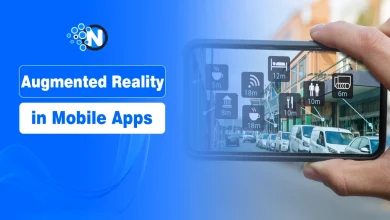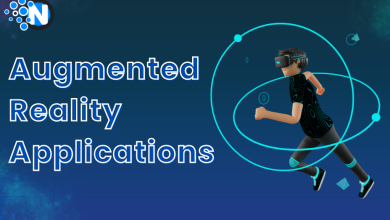Learning in a New Dimension: The Benefits of VR Training
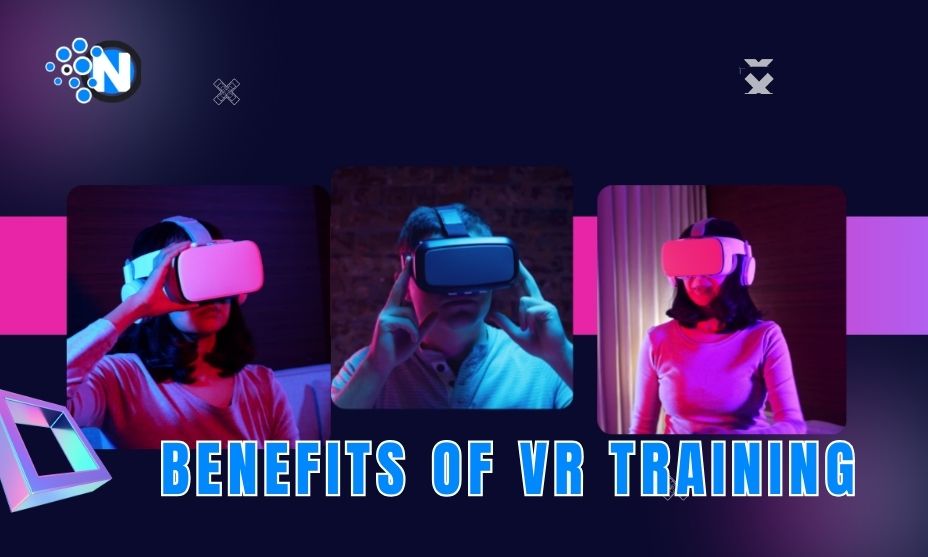
Virtual reality is no longer just an object of science fiction. This technology exists and has even become ingrained within us at every level.
One of the most prominent applications of VR in today’s businesses is for professional training: VR immersive, engaging simulations that permit learners to gain new skills by means of virtual exploration and experimentation. With no risk of real-world implications, one learns through play in simulated environments.
Yet, how can VR training benefit your business? What if my field isn’t related to technology at all?
This is where this article comes in to answer these questions, and we’ll explore the unique benefits of VR in professional training.
Without further ado, let us begin.
How VR Training Works
VR training leverages VR technology to facilitate experiential learning with immersive, realistic, and interactive simulations.
The actual components of VR training modules can vary, but here are the most important ones:
- VR headset: A device, typically head-mounted, that provides audiovisual stimuli to its users, allowing the users to see, hear, and interact with the virtual environments.
- Controllers: Handheld input devices (or specialized ones) that allow users to navigate the virtual simulation and manipulate the virtual objects within the environment.
- VR software: The software aspect of the VR simulation is utilized to deliver VR training content, which can include games, simulations, and other interactive training experiences.
- Computer hardware: Computers or standalone consoles are used to render virtual environments in real-time.
With these components, here is a brief overview of how a typical VR training session works:
- The learner puts on a VR headset and the controllers.
- The learner entered the virtual environment that simulated the scenario they were training for.
- The learner learns new skills or knowledge by interacting with the virtual environment and consuming the content presented.
- After the VR training has concluded, the learner receives feedback on their performance.
- When needed, the learner repeats steps 3 and 4.
Now that we’ve understood the basics of how VR training works, we can discuss its main benefits.
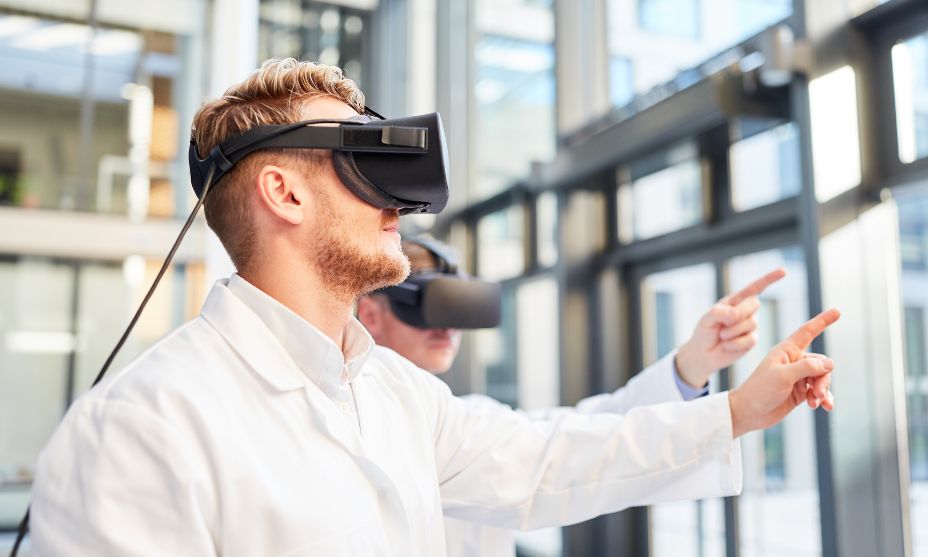
Top Benefits of VR Training
1. Immersive Learning Experience
One of the most prominent advantages of VR training over traditional training techniques is how it can provide a more immersive learning experience that is simply much more difficult/expensive or impossible to produce in real-world situations. This has been proven to provide better knowledge retention.
Learners who are deeply immersed in the VR simulation are more likely to be focused on their training and more motivated to learn new skills or develop their knowledge. With deeper focus and motivation, they are more likely to remember what they’ve just learned.
Here are some examples of how the immersive nature of VR training can improve engagement and retention:
- Facilitating gamification: With VR having its roots in video gaming, it’s easy to gamify VR training to make it more fun and engaging for learners. For example, we could allow learners to collect badges or earn scores/points for completing certain tasks.
- Real-time feedback: With VR, learners can get immediate feedback on their performance during the training they’ve just completed. With this, learners can identify and learn from their mistakes and improve their future practices.
- Better collaboration: Multiple learners can learn together in a single virtual environment. This will allow them to collaborate with each other to complete tasks or solve problems together, even when they aren’t located in the same physical place.
The immersive learning experience of VR training is particularly valuable in fields like aerospace. Aspiring pilots can improve their flying skills in the realistic simulation and gain immediate feedback after each simulation, which will help them improve to become more proficient pilots.
Read Also: Dimensions of Virtual Reality Gaming in 2023
2. Safe and Risk-Free Training
An important benefit of VR is the fact that since it is virtual, the VR environment is completely safe.
This unique VR characteristic allows professionals in high-stakes and dangerous fields to practice their skills and acquire knowledge without exposing themselves (or others) to real-world hazards. In some professions, even the smallest mistakes can be life-threatening or have severe consequences, and this is where VR training can be a necessity.
For example:
- Healthcare professions
The consequences of errors during surgical procedures or diagnosis can be severe.
VR offers a completely risk-free space for medical professionals (i.e., surgeons, mental health providers, etc.) to practice the procedures safely, refine their skills, and even explore new methods/techniques without risking the lives of patients.
- Aviation and aerospace
The aviation industry is one of the earliest adopters of VR technologies. For years, we have used VR simulations to train pilots and aerospace engineers. For example, we could train pilots on engine failure or bird strike scenarios, so they can learn how to operate the aircraft in these situations safely. In short, VR simulations allow pilots to train in dangerous situations without risking their safety.
- Military and defense
Military personnel can train in VR for real-combat scenarios without the real-world risks. Cybersecurity personnel can also use VR to practice defending against cyber threats in a safe and controlled environment.
- Manufacturing
Factory workers and those in the manufacturing industry can use VR simulations to train themselves on how to operate heavy machinery properly, handle hazardous chemical supplies, and other potentially dangerous activities.
This allows them to develop their skills to navigate these situations in their workplace safely.
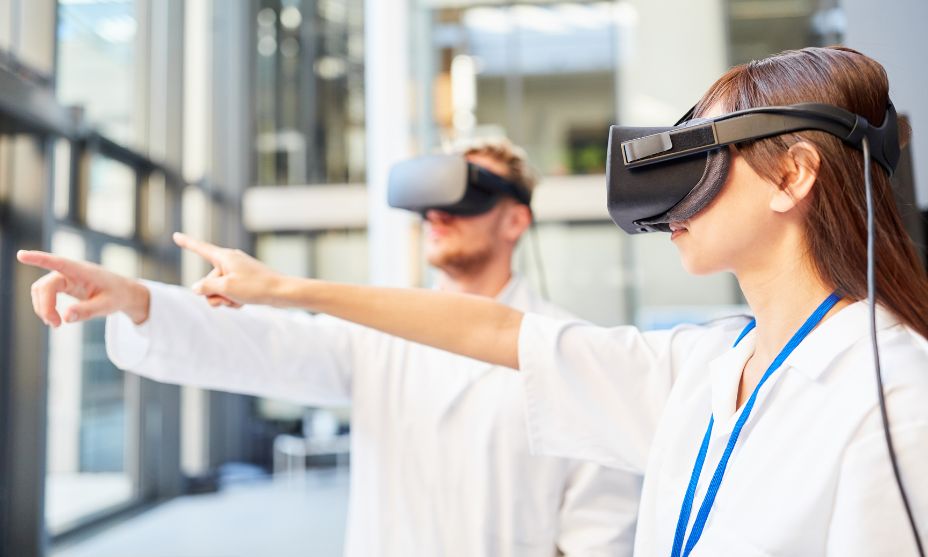
3. Improved Cost-Efficiency
By leveraging VR, organizations can reduce the costs otherwise associated with traditional training, especially by eliminating physical resources such as physical classrooms, equipment, and instructors.
Since VR training, all occurs in a virtual environment, we don’t need a building or other physical resources.
VR training can also reduce the costs associated with travel, accommodation, and others, which could be important for organizations with remote workforce. VR training can be conducted from anywhere, as long as there’s an internet connection.
The virtual nature of VR training can also allow the virtual replication of expensive (or hard-to-acquire) equipment/resources. For example, we don’t need to purchase and maintain a piece of expensive machinery, reducing the prohibitive cost of training on how to operate this machinery.
Closing Thoughts
Today, VR training can be implemented in various fields to teach soft skills and highly technical procedures. In this article, we have covered the benefits of VR training in various fields and industries, and here is a brief recap:
- Risk-free: Virtual environments are free of the potential hazards and dangers of the real world, allowing professionals to train without worry in a controlled environment.
- Improved engagement: Due to the immersive and interactive nature of VR simulations, learners are more likely to be engaged in their training, The more engaged they are in their training, the more likely they will retain the skills or knowledge learned.
- Reduced costs: VR training will eliminate the need for physical resources and infrastructure, such as training equipment and classroom buildings, reducing the training costs.
If you are currently looking for a more effective method to train your workforce and achieve better results from your employees, consider using VR training solutions like Pixaera to transform your employee development program.


